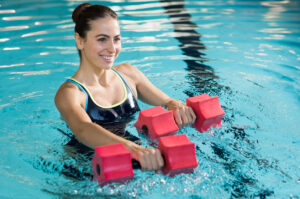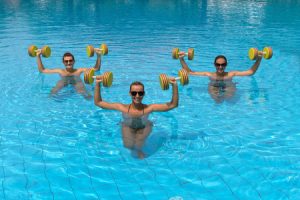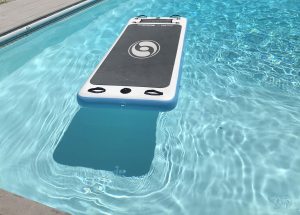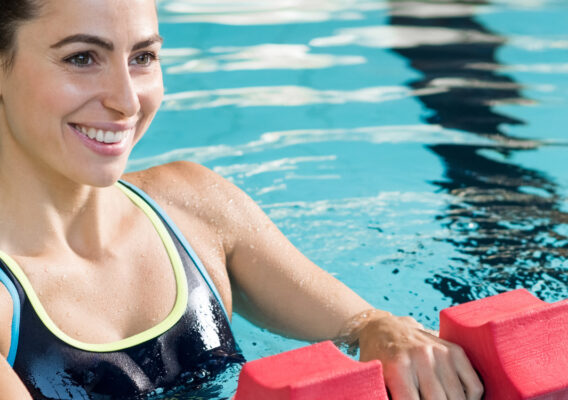
Swimming is often associated with leisurely poolside lounging and fun in the sun, but there are many benefits of pool exercise that go far beyond a refreshing dip on a hot day. From young to old, athletes to beginners, swimming can be a versatile and highly effective exercise that brings numerous health benefits. Dive into the world of aquatic exercise and learn why it’s more than just an activity for seniors or injury recovery.
The Hidden Power of Exercise in the Pool
While the serene blue water may invite you to relax and unwind, it also offers a unique and effective setting for a full-body workout. Aquatic exercise, also known as pool exercise or water workouts, refers to any type of workout that takes place in a body of water without simply swimming laps. It involves exercising in chest-deep water, utilizing the resistance of water to engage the whole body.
The unique properties of water create a distinctive exercise environment. When immersed in water, your body experiences 360° of resistance in every direction. Whether you move up, down, left, right, or in circles, you’re constantly working against resistance, which challenges your muscles and enhances your overall fitness.
Benefits of Pool Exercise

Contrary to popular belief, aquatic exercise isn’t limited to low-intensity workouts for seniors; it can also be an exciting form of high-intensity interval training (HIIT) that is gentler on the joints compared to land-based workouts. There are a range of benefits of pool exercise that cater to individuals of all ages and fitness levels.
- Low-Impact Workout: Exercising in water reduces the impact on your joints, making it an ideal option for those with knee or joint issues. Even individuals with reconstructed knees can perform running and jumping exercises without the usual stress on their joints.
- Cardiovascular and Strength Improvement: Aquatic exercise may not get your heart pumping as quickly as land-based workouts due to hydrostatic pressure, but studies have shown that it can still deliver similar improvements in both aerobic and anaerobic fitness levels.
- Versatility: From slow, controlled movements for improved mobility and balance to rapid exercises for cardiovascular benefits and strength training, aquatic workouts can cater to a wide range of fitness goals.
- Full-Body Engagement: Unlike some land-based exercises that focus on specific muscle groups, aquatic workouts engage the entire body promoting balanced muscle development.
- Joint Flexibility and Range of Motion: The buoyancy of water allows for gentle stretching and increased range of motion, aiding in joint flexibility and mobility.
- Reduced Overheating: The cool water temperature in the pool prevents overheating during exercise, making it more comfortable for longer workouts.
Getting Started with Pool Exercise
 You can experience all the benefits of pool exercise without any elaborate equipment to get started. All you need is a swimming pool and a bathing suit or a shortie wetsuit. The water temperature should ideally be between 83° to 86° F for a comfortable workout experience. Begin without equipment to learn how to use water resistance effectively for your workout. Move slowly through the water while jogging in place or doing leg exercises to enhance mobility and balance. As you progress, consider incorporating webbed aqua gloves to increase resistance and build upper body and core strength. Nylon webbed gloves are recommended for optimal resistance.
You can experience all the benefits of pool exercise without any elaborate equipment to get started. All you need is a swimming pool and a bathing suit or a shortie wetsuit. The water temperature should ideally be between 83° to 86° F for a comfortable workout experience. Begin without equipment to learn how to use water resistance effectively for your workout. Move slowly through the water while jogging in place or doing leg exercises to enhance mobility and balance. As you progress, consider incorporating webbed aqua gloves to increase resistance and build upper body and core strength. Nylon webbed gloves are recommended for optimal resistance.
Most people start their aquatic exercise journey in the shallow end of the pool. As you gain confidence and strength, you can switch to the deep end using a flotation belt, which adds an extra challenge to your balance and stability. As you get stronger and more confident, you can add aquatic weights or a yoga board.
You can even follow along to water workouts, much like watching a workout video with waterproof earbuds and lessons from YouTube’s Water Exercise Coach and websites like PoolFit where you can see demonstrations of pool stretching and exercise movements.
Aquatic Exercise Workout Components
A full aquatic exercise workout should include a warm-up, a workout, and a cool down, all while staying hydrated.
Warm Up
To warm up in the water, spend about five minutes jogging at varying levels with your feet close together than slightly wider than your shoulders, jog for a while with each foot slightly ahead of the other, and then try jogging with your toes pointed outwards, like a duck. This targets different muscle groups and gets your legs and body warmed up.
The Workout
A high-intensity interval training (HIIT) routine is broken up by active recovery exercises and can be performed with or without webbed gloves. Remember to maintain about 80 percent of your capacity during the intense exercises and use the slower ones to catch your breath:

- Jumping jacks: Do 20 jumping jacks quickly and stop your arms before they leave the water.
- Do ten jumping jacks slower.
- Jog for three minutes at a moderate pace, incorporating jogging variations from the warm-up.
- Arm pulls, side and down: Do each of the following movements quickly, then follow with 10 slower repetitions:
- Arm pullbacks: Begin with your arms floating in front of you, thumbs up. Open your arms wide until they are straight out at your sides, keeping them under the water’s surface.
- Arm pull downs: Begin with your arms floating on each side of you, palms facing down. Push your arms down into the water until they touch the outside of your legs.
- Power arm pull combos: Combine the two movements by starting with your arms in front of you, pulling them out wide, then pushing them down to your sides.
- Jumping jacks: Repeat 20 jumping jacks quickly, followed by ten slower jumping jacks.
- Single-leg cycle: Stand on one leg and circle the other leg in the water as if you were riding a bicycle. Do this as hard as you can for 30 seconds on each leg.
- Big arm circles: Stir the water with your arms outstretched in front of you, making large circles. Circle the water with both hands for one minute in each direction, either moving both arms together or alternating one arm at a time.
Remember to stay hydrated, especially on hot days, and drink water after the workout to replenish lost fluids.
Dive into a New Fitness Experience
There are numerous health benefits of pool exercise that cater to people of all ages and fitness levels. Whether you’re recovering from an injury, seeking a low-impact workout, or looking for a challenging high-intensity routine, the pool is the place to be. The resistance of water, the gentle impact on joints, and the versatility of aquatic exercise make it an excellent addition to any fitness regimen. So, grab your swimsuit, find a pool, and dive into this exciting and refreshing way to stay fit and healthy.
The Swimming Pool Store helps you keep your pool water clean and healthy for all the aquatic exercise and swimming fun you can have. We offer comprehensive swimming pool services, including regular maintenance, cleanings, renovations, openings, and closings, along with all the pool supplies you need for maintenance and fun. Contact us with any questions, and continue to swim for fun and fitness and experience the many benefits of pool exercise.


